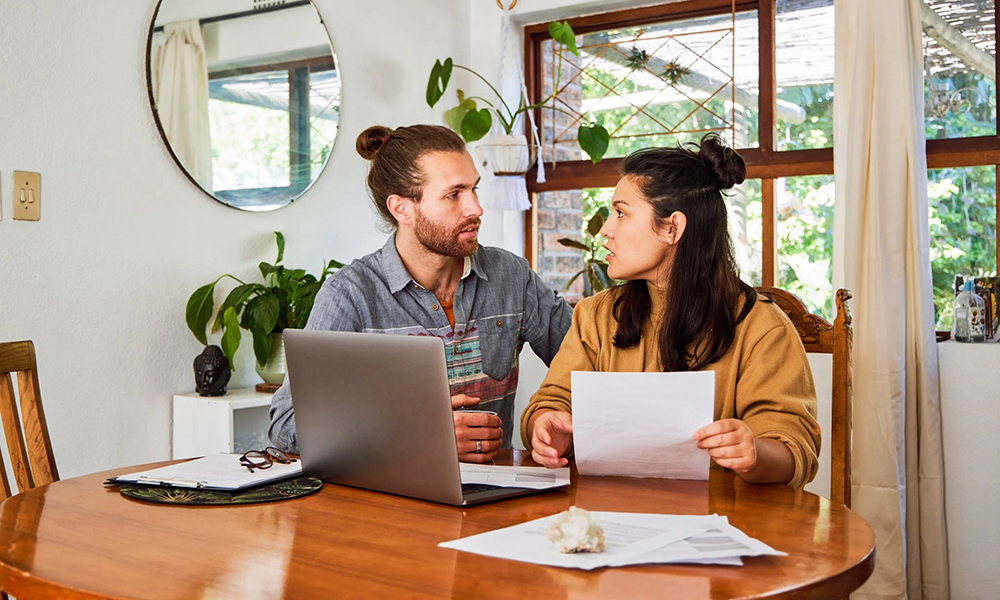
Redfin研究发现,在美国,如果你想购买一套入门级住宅,年薪需要达到约76,000美元。据美国人口普查局(Census Bureau)统计,中位数家庭收入为74,580美元,或按照Redfin的估计为84,072美元。无论如何,肯定是某些方面出现了问题。
事情要从疫情期间说起。当时,远程办公革命加上史上最低的抵押贷款利率,刺激房地产市场繁荣,自疫情以来房价已经暴涨了约50%。不只如此:随后抵押贷款利率也大幅上涨,一度超过了8%,创下二十多年来的最高水平。后来抵押贷款利率下降到6.91%,但依旧远高于疫情期间和之前几年的水平。那么我们得到了什么?与正常收入和高抵押贷款利率不相符的高房价。当然,还有房屋供应不足。
分析报告的作者写道:“入门级住宅的可负担性只有疫情之前的约一半。在2020年2月,美国人的年收入需要达到40,465美元,才能买得起一套美国入门级住宅,当时入门级住宅的中位数售价为169,000美元,平均抵押贷款利率约为3.5%。”
Redfin的一份最新分析发现,上个月,普通入门级住宅的售价为240,000美元,平均每月的月供为1,896美元。入门级住宅房价同比上涨了3.4%,而平均月供上涨了8.2%。购买这样一套入门级住宅需要达到的年收入,比一年前提高了超过8%。
Redfin高级经济学家伊莱贾·德拉坎帕表示:“疫情期间的房地产市场繁荣改变了入门级住宅的定义。十年前,许多人认为入门级住宅是小户型三居独户住宅。现在,这种住宅尤其是位于高房价地区的住宅,房价高达七位数。”
去年,《财富》杂志报道称,300,000美元的入门级住宅已经不复存在。房地产市场研究公司Zonda的首席经济学家阿里·沃尔夫对《财富》杂志表示,全美300,000美元以内新房项目的占比持续下降。当时沃尔夫说道:“我们在无意中创造了一个租房社会,这并不是因为自愿的选择,而是因为压力。”他还表示,这会加剧“经济中有房和无房群体之间的进一步失衡”。现在,据一些人估计,租房比买房成本更低,而且这种情况可能持续更多年。
沃尔夫后来对《财富》杂志表示,Zonda将入门级住宅的定义调整为售价400,000美元以下的住宅。如《财富》杂志之前的报道所示,房屋建筑商甚至选择了建设面积更小的住宅,而且这依旧不够。
Redfin的德拉坎帕表示:“目前最经济的住宅,对于普通美国人来说依旧没有能力购买,更不用说普通的首次购房人,他们往往会选择更低首付,而作为交换,他们必须支付更高的月供。房价上涨和更高的抵押贷款利率迫使收入高于中位数收入的购房人,不得不购买入门级住宅,甚至导致收入更低的购房人退出市场。”
然而,从数字来看,与去年秋天相比,入门级住宅的可负担性有所改善,但这只是因为抵押贷款利率不再维持在8%,因此月供略有下降。在美国的一些地方,购买一套入门级住宅几乎是不可能实现的梦想。
在加州购买一套入门级住宅需要达到的收入水平最高。分析报告称:“在圣何塞,购房人购买一套中位数价格的入门级住宅,年收入需要达到约319,000美元,旧金山为306,000美元,在安纳海姆为247,000美元,”分别同比上涨了11.7%、2.4%和12.1%。
而在奥克兰,购买一套普通入门级住宅需要达到的年收入为209,096美元;圣地亚哥为216,189美元;洛杉矶为177,886美元。要知道加州的中位数家庭收入只有91,905美元。
除了加州,据Redfin统计,在奥斯汀购买一套入门级住宅需要达到的年收入为118,201美元;波士顿为158,764美元;纽约为162,845美元。
购买入门级住宅需要达到的年收入水平最低的地区位于铁锈带城市,例如在底特律只需要22,000美元,匹兹堡为32,000美元,而圣路易斯为37,000美元。但需要注意的是,在50个人口最密集的城市区域,只有一个区域购买入门级住宅所需要的收入水平下降,那就是匹兹堡。其他地区均处于上涨的趋势。(财富中文网)
翻译:刘进龙
审校:汪皓
Redfin研究发现,在美国,如果你想购买一套入门级住宅,年薪需要达到约76,000美元。据美国人口普查局(Census Bureau)统计,中位数家庭收入为74,580美元,或按照Redfin的估计为84,072美元。无论如何,肯定是某些方面出现了问题。
事情要从疫情期间说起。当时,远程办公革命加上史上最低的抵押贷款利率,刺激房地产市场繁荣,自疫情以来房价已经暴涨了约50%。不只如此:随后抵押贷款利率也大幅上涨,一度超过了8%,创下二十多年来的最高水平。后来抵押贷款利率下降到6.91%,但依旧远高于疫情期间和之前几年的水平。那么我们得到了什么?与正常收入和高抵押贷款利率不相符的高房价。当然,还有房屋供应不足。
分析报告的作者写道:“入门级住宅的可负担性只有疫情之前的约一半。在2020年2月,美国人的年收入需要达到40,465美元,才能买得起一套美国入门级住宅,当时入门级住宅的中位数售价为169,000美元,平均抵押贷款利率约为3.5%。”
Redfin的一份最新分析发现,上个月,普通入门级住宅的售价为240,000美元,平均每月的月供为1,896美元。入门级住宅房价同比上涨了3.4%,而平均月供上涨了8.2%。购买这样一套入门级住宅需要达到的年收入,比一年前提高了超过8%。
Redfin高级经济学家伊莱贾·德拉坎帕表示:“疫情期间的房地产市场繁荣改变了入门级住宅的定义。十年前,许多人认为入门级住宅是小户型三居独户住宅。现在,这种住宅尤其是位于高房价地区的住宅,房价高达七位数。”
去年,《财富》杂志报道称,300,000美元的入门级住宅已经不复存在。房地产市场研究公司Zonda的首席经济学家阿里·沃尔夫对《财富》杂志表示,全美300,000美元以内新房项目的占比持续下降。当时沃尔夫说道:“我们在无意中创造了一个租房社会,这并不是因为自愿的选择,而是因为压力。”他还表示,这会加剧“经济中有房和无房群体之间的进一步失衡”。现在,据一些人估计,租房比买房成本更低,而且这种情况可能持续更多年。
沃尔夫后来对《财富》杂志表示,Zonda将入门级住宅的定义调整为售价400,000美元以下的住宅。如《财富》杂志之前的报道所示,房屋建筑商甚至选择了建设面积更小的住宅,而且这依旧不够。
Redfin的德拉坎帕表示:“目前最经济的住宅,对于普通美国人来说依旧没有能力购买,更不用说普通的首次购房人,他们往往会选择更低首付,而作为交换,他们必须支付更高的月供。房价上涨和更高的抵押贷款利率迫使收入高于中位数收入的购房人,不得不购买入门级住宅,甚至导致收入更低的购房人退出市场。”
然而,从数字来看,与去年秋天相比,入门级住宅的可负担性有所改善,但这只是因为抵押贷款利率不再维持在8%,因此月供略有下降。在美国的一些地方,购买一套入门级住宅几乎是不可能实现的梦想。
在加州购买一套入门级住宅需要达到的收入水平最高。分析报告称:“在圣何塞,购房人购买一套中位数价格的入门级住宅,年收入需要达到约319,000美元,旧金山为306,000美元,在安纳海姆为247,000美元,”分别同比上涨了11.7%、2.4%和12.1%。
而在奥克兰,购买一套普通入门级住宅需要达到的年收入为209,096美元;圣地亚哥为216,189美元;洛杉矶为177,886美元。要知道加州的中位数家庭收入只有91,905美元。
除了加州,据Redfin统计,在奥斯汀购买一套入门级住宅需要达到的年收入为118,201美元;波士顿为158,764美元;纽约为162,845美元。
购买入门级住宅需要达到的年收入水平最低的地区位于铁锈带城市,例如在底特律只需要22,000美元,匹兹堡为32,000美元,而圣路易斯为37,000美元。但需要注意的是,在50个人口最密集的城市区域,只有一个区域购买入门级住宅所需要的收入水平下降,那就是匹兹堡。其他地区均处于上涨的趋势。(财富中文网)
翻译:刘进龙
审校:汪皓
You need to make almost $76,000 a year to buy a starter home, according to Redfin. The median household income is $74,580, per the Census Bureau, or $84,072, by Redfin’s estimate. Either way, something is wrong.
It all goes back to the pandemic, when the remote-work revolution collided with historically low mortgage rates—it fueled a housing boom, and home prices have soared almost 50% since. And that’s not all; mortgage rates followed, at one point reaching a more than two-decade high of just above 8%. They’ve come down since to 6.91%, but are still significantly higher than they were during the pandemic and years prior. So what have we got? High home prices unaligned with normal incomes and high mortgage rates. Oh, and a shortage of homes.
“Starter homes are roughly half as affordable as they were before the pandemic,” the author of the analysis wrote. “Americans needed to earn $40,465 annually to afford the typical U.S. starter home in February 2020, when the median sale price was $169,000 and the average mortgage rate was about 3.5%.”
The typical starter home sold for $240,000 last month, and the average monthly mortgage payment was $1,896, according to a new analysis from Redfin. The former was up 3.4% and the latter 8.2% from a year earlier. And the income needed to afford said starter home is more than 8% higher than a year ago.
“The pandemic housing market boom changed the definition of a starter home,” a Redfin senior economist, Elijah de la Campa, said. “A decade ago, many people thought of a starter home as a small three-bedroom single-family house. Now that type of home could cost seven figures, especially in expensive parts of the country.”
Last year, Fortune reported the $300,000 starter home was going extinct. Ali Wolf, housing market research firm Zonda’s chief economist, told Fortune that the share of new home projects under $300,000 was declining all across the country. “We’re creating, inadvertently, a renter society not because of choice but because of force,” Wolf said at the time—adding that it would fuel a “larger imbalance between the haves and have-nots in the economy.” We know right now renting is considered cheaper than buying and will be for years, by some estimates.
Wolf later told Fortune that Zonda adjusted what it considers to be entry-level to homes under $400,000. Homebuilders have even resorted to building smaller homes, as Fortune has reported, and it still isn’t enough.
“Today’s most affordable homes are still hard for the average American to afford, let alone the average first-time buyer who tends to put less money down in exchange for higher monthly payments,” Redfin’s de la Campa said. “Rising prices and mortgage rates are pushing buyers who earn more than the median income to buy starter homes, and often pushing buyers who earn less money out of the market.”
However, starter homes are technically more affordable than they were last fall, but that’s simply because mortgage rates aren’t at 8% anymore, so monthly payments are slightly lower. Still, there are places across the country where it feels nearly impossible to even afford a starter home.
The income needed to buy a starter home in California is the highest. “A homebuyer needs to earn roughly $319,000 to buy the median-priced starter home in San Jose, $306,000 in San Francisco, and $247,000 in Anaheim,” the analysis read—an 11.7%, 2.4%, and 12.1% annual increase, respectively.
More so, to afford a normal starter home in Oakland, you need to make $209,096; or $216,189 in San Diego; or $177,886 in Los Angeles. For some context, California’s median household income is $91,905.
Leaving California, you need to make $118,201 to afford a starter home in Austin; $158,764 in Boston; and $162,845 in New York, according to Redfin.
And the needed income is the lowest in the Rust Belt—in Detroit, you only need to make $22,000, or $32,000 in Pittsburgh, and $37,000 in St. Louis. But consider this, the income needed to afford a starter home only declined in one of the 50 most populous metropolitan areas: Pittsburgh. It rose everywhere else.






